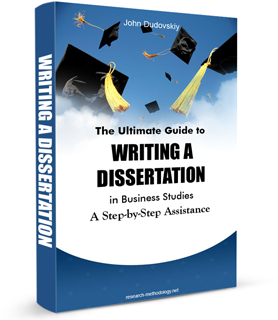
The Ultimate Guide to Writing a Dissertation in Business Studies: A Step-by-Step Assistance (7th edition) Date January 2024 Author John Dudovskiy $ 9,99 One time payment Proceed to Checkout Description Table of contents List of tables List of figures “Of all the research books I have read, this is the easiest to understand. I now feel like I know exactly what I need to do” - Jonathan, Pittsburgh, USA Why this e-book? The Ultimate Guide to Writing a Dissertation contains step-by-step guidance derived from the experience of assisting hundreds of students who have successfully completed dissertations in business studies. Unlike many other books devoted to this topic, The Ultimate Guide to Writing a Dissertation explains the whole process starting from the selection of the research area to the completion of the final draft in simple words. The e-book can be used by students on both levels – Bachelors and Masters, as it explains the underlying principles and rules of writing dissertation in business studies, and these principles are equally effective for Bachelors and Masters Dissertations. "A fantastic book and a big help" - Lewis Scollen, Leeds Beckett University, England Writing a research project can prove to be one of the most challenging experiences in life. For the majority of students writing a dissertation as a final part of studies for a degree is their first engagement in a research that requires primary data collection. Collecting a primary data and analyzing the primary data, regardless of the method chosen, can prove to be a very challenging task for students to accomplish. This is mainly due to the lack or absence of the previous research experience. To put it simply, it may not be easy to find a gap in the research area of your interest or identify a practical problem to…
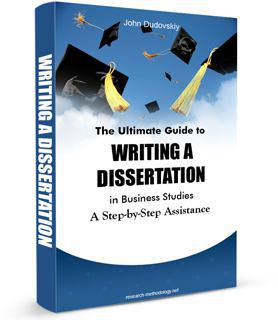
Your dissertation needs to include suggestions for future research. Depending on requirements of your university, suggestions for future research can be either integrated into Research Limitations section or it can be a separate section. You will need to propose 4-5 suggestions for future studies and these can include the following: 1. Building upon findings of your research. These may relate to findings of your study that you did not anticipate. Moreover, you may suggest future research to address unanswered aspects of your research problem. 2. Addressing limitations of your research. Your research will not be free from limitations and these may relate to formulation of research aim and objectives, application of data collection method, sample size, scope of discussions and analysis etc. You can propose future research suggestions that address the limitations of your study. 3. Constructing the same research in a new context, location and/or culture. It is most likely that you have addressed your research problem within the settings of specific context, location and/or culture. Accordingly, you can propose future studies that can address the same research problem in a different settings, context, location and/or culture. 4. Re-assessing and expanding theory, framework or model you have addressed in your research. Future studies can address the effects of specific event, emergence of a new theory or evidence and/or other recent phenomenon on your research problem. My e-book, The Ultimate Guide to Writing a Dissertation in Business Studies: a step by step assistance offers practical assistance to complete a dissertation with minimum or no stress. The e-book covers all stages of writing a dissertation starting from the selection to the research area to submitting the completed version of the work within the deadline. John Dudovskiy
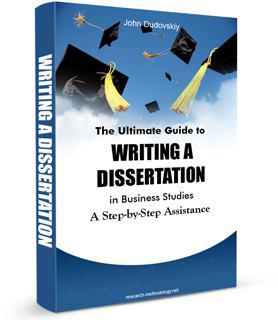
Research supervisors play a great role in the success of your project; therefore, it is important to establish appropriate and beneficial relationships with your supervisor from the beginning of your research process. Dealing with supervisor is a critical success factor impacting the outcome of the project In some universities you are able to choose your dissertation supervisor. If this is the case with your university, then you should give preference to more experienced supervisor in your research area. You must have realistic expectations. Do not expect your supervisor to immerse in your work in great details. The responsibility of your supervisor is to direct you towards the right path no to complete research on your behalf. Do not expect your supervisor to immerse in your work in great details Adhering to the following principles can increase the quality of your interactions with your supervisor significantly making your task of producing a quality dissertation much easier: 1. Take time to prepare for each meeting with your supervisor. You will have only a limited number of meetings with your supervisor and you must strive to make the most of each meeting. It is critically important to address each point mentioned by your supervisor during the last meeting. 2. Respect the time of your supervisor. Supervisors are usually dealing with a number of students writing dissertation simultaneously, and most of them have teaching classes as well. You must prepare questions for your supervisor in advance, and refrain asking unintelligent questions such as if you need to put course title on the cover of your work or asking questions about submission date which can be found on dissertation handbook. Asking such questions is a waste of time for you and your supervisor and it will most likely annoy your supervisor. 3. Communicate…
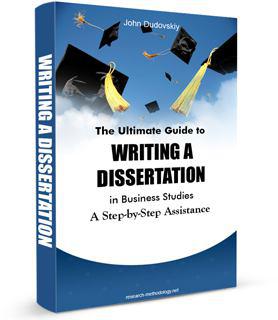
Research methods is a broad term. While methods of data collection and data analysis represent the core of research methods, you have to address a range of additional elements within the scope of your research. The most important elements of research methodology expected to be covered in business dissertation at Bachelor’s, Master’s and PhD levels include research philosophy, types of reseaerch, research approach, methods of data collection, sampling and ethical considerations. Let’s look briefly at each of them separately. 1. Research philosophy Research philosophy is associated with clarification of assumption about the nature and the source of knowledge. All studies are based on some kind of assumptions about the world and the ways of understanding the world. There is no consensus among philosophers about the most appropriate ways of understanding the world; therefore, you are expected to clarify the philosophy you have chosen to understand your research problem. In simple words, research phislophy refers to your beliefe about how data should be collected, analysed and used. Accordingly, clarification of reseaerch philosophy is a starting point for the choice of research methods. Positivism and phenomenology are the two main contrasting research philosophies related to business studies. Positivism is an objective approach which relies on facts and quantitative data. Phenomenology, on the contrary, takes into account subjective human interests and focuses on meanings rather than hard data. You have to specify in your dissertation which philosophy you are following. You can read more about research philosophy here. 2. Types of Research Reseach methods also depend on the type of research accprding to the purpose of the study. Specifically, according to their purpose, studies can be classified either as applied research or fundamental research. Applied research, also known as action research, aims to find solution for immediate and specific problem(s). Accordingly, findings of applised studies are valuable on practical levels…
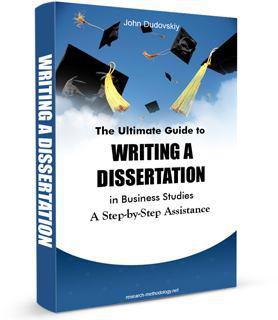
Research validity in surveys relates to the extent at which the survey measures right elements that need to be measured. In simple terms, validity refers to how well an instrument as measures what it is intended to measure. Reliability alone is not enough, measures need to be reliable, as well as, valid. For example, if a weight measuring scale is wrong by 4kg (it deducts 4 kg of the actual weight), it can be specified as reliable, because the scale displays the same weight every time we measure a specific item. However, the scale is not valid because it does not display the actual weight of the item. Research validity can be divided into two groups: internal and external. It can be specified that “internal validity refers to how the research findings match reality, while external validity refers to the extend to which the research findings can be replicated to other environments” (Pelissier, 2008, p.12). Moreover, validity can also be divided into five types: 1. Face Validity is the most basic type of validity and it is associated with a highest level of subjectivity because it is not based on any scientific approach. In other words, in this case a test may be specified as valid by a researcher because it may seem as valid, without an in-depth scientific justification. Example: questionnaire design for a study that analyses the issues of employee performance can be assessed as valid because each individual question may seem to be addressing specific and relevant aspects of employee performance. 2. Construct Validity relates to assessment of suitability of measurement tool to measure the phenomenon being studied. Application of construct validity can be effectively facilitated with the involvement of panel of ‘experts’ closely familiar with the measure and the phenomenon. Example: with the application…
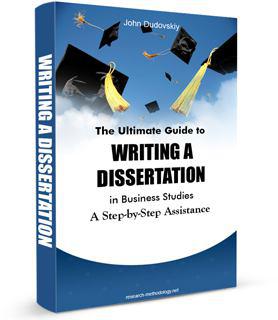
Ethical Considerations can be specified as one of the most important parts of the research. Dissertations may even be doomed to failure if this part is missing. According to Bryman and Bell (2007)[1] the following ten points represent the most important principles related to ethical considerations in dissertations: Research participants should not be subjected to harm in any ways whatsoever. Respect for the dignity of research participants should be prioritised. Full consent should be obtained from the participants prior to the study. The protection of the privacy of research participants has to be ensured. Adequate level of confidentiality of the research data should be ensured. Anonymity of individuals and organisations participating in the research has to be ensured. Any deception or exaggeration about the aims and objectives of the research must be avoided. Affiliations in any forms, sources of funding, as well as any possible conflicts of interests have to be declared. Any type of communication in relation to the research should be done with honesty and transparency. Any type of misleading information, as well as representation of primary data findings in a biased way must be avoided. In order to address ethical considerations aspect of your dissertation in an effective manner, you will need to expand discussions of each of the following points to at least one paragraph: 1. Voluntary participation of respondents in the research is important. Moreover, participants have rights to withdraw from the study at any stage if they wish to do so. 2. Respondents should participate on the basis of informed consent. The principle of informed consent involves researchers providing sufficient information and assurances about taking part to allow individuals to understand the implications of participation and to reach a fully informed, considered and freely given decision about whether or not to do so, without…
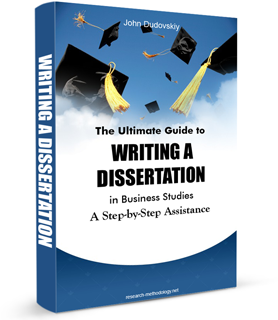
Quota sampling method is a non-probability sampling and it can be defined as a sampling method of gathering representative data from a group. Application of quota sampling ensures that sample group represents certain characteristics of the population chosen by the researcher. Quota sampling can be divided into two groups: controlled and uncontrolled. Controlled quota sampling involves introduction of certain restrictions in order to limit researcher’s choice of samples. Uncontrolled quota sampling, on the other hand, resembles convenience sampling method in a way that researcher is free to choose sample group members according to his/her will. The main difference between quota and stratified sampling can be explained in a way that in quota sampling researchers use non-random sampling methods to gather data from one stratum until the required quota fixed by the researcher is fulfilled. Accordingly, the quota is based on the proportion of subclasses in the population. Application of Quota Sampling: an Example Let’s assume your research objective is to evaluate the impact of cross-cultural differences on employee motivation in Virgin Media in the UK. You need to assess the effectiveness of employee motivational tools taking into account gender differences among the workforce. Quota sampling can be applied in the following manner: 1. Dividing the population into specific groups. Virgin Media employees in the UK as the sampling frame need to be divided into the following five groups according to their cultural background: European Asian (India) Asian (China) Black (African) Other 2. Calculating a quota for each group. You supervisor confirms that in order to achieve research objectives, 30 representatives from each group and the total sample size of 150 respondents would be appropriate. 3. Determining specific condition(s) to be met and quota in each group Both genders, males and females need to be represented equally in your sample group. This is an important condition that has to…
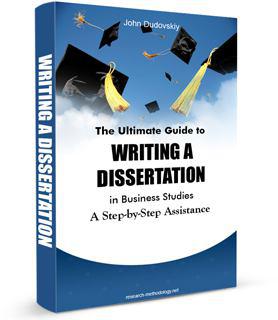
Qualitative data refers to non-numeric information such as interview transcripts, notes, video and audio recordings, images and text documents. Qualitative data analysis can be divided into the following five categories: 1. Content analysis. This refers to the process of categorizing verbal or behavioural data to classify, summarize and tabulate the data. 2. Narrative analysis. This method involves the reformulation of stories presented by respondents taking into account context of each case and different experiences of each respondent. In other words, narrative analysis is the revision of primary qualitative data by researcher. 3. Discourse analysis. A method of analysis of naturally occurring talk and all types of written text. 4. Framework analysis. This is more advanced method that consists of several stages such as familiarization, identifying a thematic framework, coding, charting, mapping and interpretation. 5. Grounded theory. This method of qualitative data analysis starts with an analysis of a single case to formulate a theory. Then, additional cases are examined to see if they contribute to the theory. Qualitative data analysis can be conducted through the following three steps: Step 1: Developing and Applying Codes. Coding can be explained as categorization of data. A ‘code’ can be a word or a short phrase that represents a theme or an idea. All codes need to be assigned meaningful titles. A wide range of non-quantifiable elements such as events, behaviours, activities, meanings etc. can be coded. There are three types of coding: Open coding. The initial organization of raw data to try to make sense of it. Axial coding. Interconnecting and linking the categories of codes. Selective coding. Formulating the story through connecting the categories. Coding can be done manually or using qualitative data analysis software such as NVivo, Atlas ti 6.0, HyperRESEARCH 2.8, Max QDA and others. When using manual…
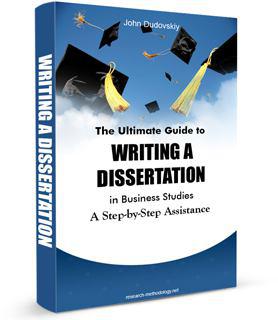
In quantitative data analysis you are expected to turn raw numbers into meaningful data through the application of rational and critical thinking. Quantitative data analysis may include the calculation of frequencies of variables and differences between variables. A quantitative approach is usually associated with finding evidence to either support or reject hypotheses you have formulated at the earlier stages of your research process. The same figure within data set can be interpreted in many different ways; therefore it is important to apply fair and careful judgement. For example, questionnaire findings of a research titled “A study into the impacts of informal management-employee communication on the levels of employee motivation: a case study of Agro Bravo Enterprise” may indicate that the majority 52% of respondents assess communication skills of their immediate supervisors as inadequate. This specific piece of primary data findings needs to be critically analyzed and objectively interpreted through comparing it to other findings within the framework of the same research. For example, organizational culture of Agro Bravo Enterprise, leadership style, the levels of frequency of management-employee communications need to be taken into account during the data analysis. Moreover, literature review findings conducted at the earlier stages of the research process need to be referred to in order to reflect the viewpoints of other authors regarding the causes of employee dissatisfaction with management communication. Also, secondary data needs to be integrated in data analysis in a logical and unbiased manner. Let’s take another example. You are writing a dissertation exploring the impacts of foreign direct investment (FDI) on the levels of economic growth in Vietnam using correlation quantitative data analysis method. You have specified FDI and GDP as variables for your research and correlation tests produced correlation coefficient of 0.9. In this case simply stating that there is a strong…
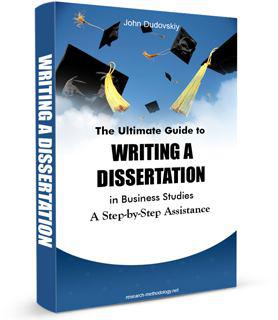
It is for sure that your research will have some limitations and it is normal. However, it is critically important for you to be striving to minimize the range of scope of limitations throughout the research process. Also, you need to provide the acknowledgement of your research limitations in conclusions chapter honestly. It is always better to identify and acknowledge shortcomings of your work, rather than to leave them pointed out to your by your dissertation assessor. While discussing your research limitations, don’t just provide the list and description of shortcomings of your work. It is also important for you to explain how these limitations have impacted your research findings. Your research may have multiple limitations, but you need to discuss only those limitations that directly relate to your research problems. For example, if conducting a meta-analysis of the secondary data has not been stated as your research objective, no need to mention it as your research limitation. Research limitations in a typical dissertation may relate to the following points: 1. Formulation of research aims and objectives. You might have formulated research aims and objectives too broadly. You can specify in which ways the formulation of research aims and objectives could be narrowed so that the level of focus of the study could be increased. 2. Implementation of data collection method. Because you do not have an extensive experience in primary data collection (otherwise you would not be reading this book), there is a great chance that the nature of implementation of data collection method is flawed. 3. Sample size. Sample size depends on the nature of the research problem. If sample size is too small, statistical tests would not be able to identify significant relationships within data set. You can state that basing your study in…
